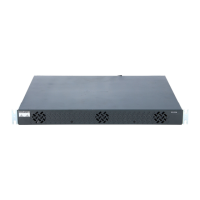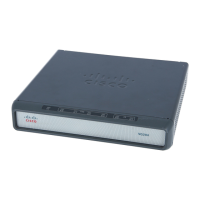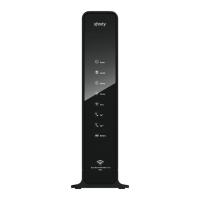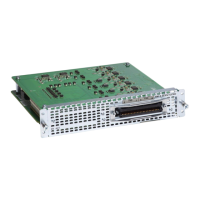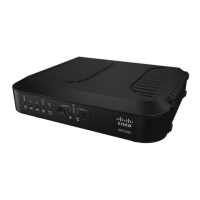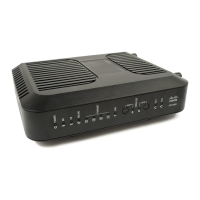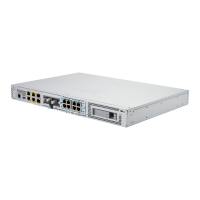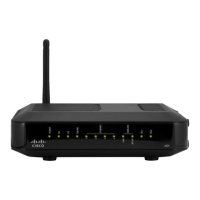Basic Configuration Using the Command-Line Interface
Configuring the Asynchronous Group Interface
6
Cisco AS5350XM and Cisco AS5400XM Universal Gateways Software Configuration Guide
AS5400(config-if)# ip address 172.22.90.1 255.255.255.0
AS5400(config-if)# exit
AS5400(config)# interface GigabitEthernet 0/0
AS5400(config-if)# ip address 172.28.186.55 255.255.255.240
AS5400(config-if)# no shutdown
AS5400(config-if)# exit
AS5400(config)# ip route 0.0.0.0 0.0.0.0 172.28.186.49
In this example:
• Interface loopback 0—Identifies the universal gateway with a unique and stable IP address. One
unique IP address from a common block of addresses is assigned to each device in the IP network.
This technique makes security-filtering easy for the Network Operations Center (NOC). One Class
C subnet used for device identification can support 254 distinct devices with unique loopback
addresses.
• Interface loopback 1—Hosts a pool of IP addresses for the remote nodes. In this way, 1 route, instead
of 254 routes, is summarized and propagated to the backbone. Pick the IP address for loopback 1
from the range of addresses that you will assign to the local address pool.
Step 2 Verify that the Gigabit Ethernet interface is up. Ping the default gateway to verify this.
AS5400# ping 172.28.186.49
Type escape sequence to abort.
Sending 5, 100-byte ICMP Echos to 172.28.186.49, timeout is 2 seconds:
.!!!!
Success rate is 80 percent (4/5), round-trip min/avg/max = 1/1/4 ms
This step verifies that you have IP connectivity with another device on the subnet. If the ping to the
default gateway succeeds, try pinging the DNS server in your backbone. Make sure that the backbone
routers are configured to get to the gateway; otherwise, the ping does not work. Configure the backbone
routers to support the routes to the networks you are using.
Note An 80 percent ping-success rate is normal for the first time you ping an external device. The
Cisco AS5350XM and Cisco AS5400XM universal gateways do not have an Address Resolution
Protocol (ARP) entry for the external device. A 100 percent success rate is achieved the next time you
ping the device.
Configuring the Asynchronous Group Interface
Asynchronous group interfaces allow administrators to easily configure a large number of asynchronous
interfaces by allowing them to clone from one managed copy. This can also reduce the number of lines
in the configuration, because each individual asynchronous interface configuration can be replaced by
at least one group-async interface. To assign the asynchronous interfaces to a group-async interface, first
determine the number of asynchronous lines that need to be aggregated. This can be determined from
the running configuration.
Notice that in the “Checking the Initial Running Configuration” section on page 5, the asynchronous
lines are numbered from 0 to 107.
